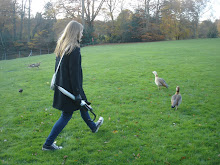 The crossing from Cambodia into Vietnam was as smooth and drama-free as eating a sandwich: worlds away from our Thailand/Cambodia crossing which was, frankly, horrendous.
The crossing from Cambodia into Vietnam was as smooth and drama-free as eating a sandwich: worlds away from our Thailand/Cambodia crossing which was, frankly, horrendous. As we drove off from border control, Khmer script changed to the English alphabet (though admittedly in Vietnamese so still just as incomprehensible) and signs promoting Cambodia’s several political parties were replaced by flapping red banners proudly displaying yellow stars or the hammer and sickle.
It took about an hour to drive through Ho Chi Minh, which is an absolutely enormous city and not inaccurately described by many to have a distinctly European feel. We were dropped in the backpacker area of Pham Ngu Lao . It was dusk as we arrived: the district was lit up like a Christmas tree and alive with sounds, smells and the chatter of beer-swilling Westerners. We had a drink at a make-shift pavement bar, sat on children’s plastic chairs. Up above a crowd of swallows whooped and dived.
Next day we continued our pedestrian campaign, shunning the usual method of transport which is jumping on the back of some man’s motorbike. It’s much easier to get around on foot here than in many of the cities we’ve visited so far. The pavements are wide and shady, the streets are clearly marked and even with our crappy leaflet map (according to which the only thing in HCMC is the water puppet show it was promoting) we were able to find our way around with no problems.
 First stop was the War Remnants Museum, formally known as the War Atrocities Committed by China and the US Museum. Mostly it’s dedicated to the war with America, with harrowing displays of victims of massacres, chemical warfare and napalm. It makes for pretty compelling, if grisly, viewing, but the museum would have been more interesting if it had made an effort to give more background into the politics and timeline of the war. Outside was given to the display of some serious US Army hardware including spent bombs, planes, tanks and guns – fairly dull things to look at really, but Joe was engrossed and spent a long time examining (and posing in front of) each thing.
First stop was the War Remnants Museum, formally known as the War Atrocities Committed by China and the US Museum. Mostly it’s dedicated to the war with America, with harrowing displays of victims of massacres, chemical warfare and napalm. It makes for pretty compelling, if grisly, viewing, but the museum would have been more interesting if it had made an effort to give more background into the politics and timeline of the war. Outside was given to the display of some serious US Army hardware including spent bombs, planes, tanks and guns – fairly dull things to look at really, but Joe was engrossed and spent a long time examining (and posing in front of) each thing.  A short walk from the museum is one of HCMC’s most iconic buildings, the Reunification Palace, where 30 years ago North Vietnamese tanks were famously photographed smashing through the gates to take power from Ho Chi Minh. With its concrete facade and uninspiring design the building looks distinctly more like a leisure centre than a palace, but like good tourists we gawped and took snaps for a respectful 5 minutes before moving on. A mere stone’s throw from the Palace is Ho Chi Min’s very own Notre Dame Cathedral, this one a vision in red brick.
A short walk from the museum is one of HCMC’s most iconic buildings, the Reunification Palace, where 30 years ago North Vietnamese tanks were famously photographed smashing through the gates to take power from Ho Chi Minh. With its concrete facade and uninspiring design the building looks distinctly more like a leisure centre than a palace, but like good tourists we gawped and took snaps for a respectful 5 minutes before moving on. A mere stone’s throw from the Palace is Ho Chi Min’s very own Notre Dame Cathedral, this one a vision in red brick. Despite its various attractions (alas, we never made it to the water puppet show – sorry Joe) and historical importance, a few nights proved enough. Next stop: Da Lat.

No comments:
Post a Comment